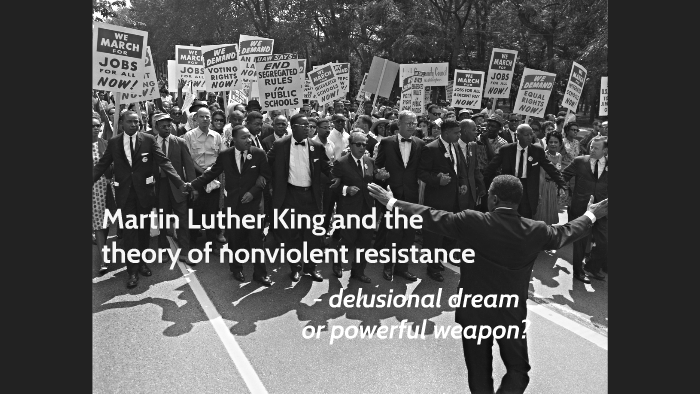
Can Non-violent Protest and Civil Disobedience Achieve Justice in this Era?
Don Smith / Washington Liberals
(July 13, 2022) — The Antifa and Black Lives Matter protests over the last several years were overwhelmingly peaceful. Nonetheless, right-wing media were able to convince tens of millions of Americans that Antifa and BLM are violent, radical movements.
Right-wing media exaggerated the few instances of violence that did occur, and many of those incidents were the result of provocations by groups such as the Proud Boys, or false-flag operations (e.g., this). I read several articles about fake news related to violence, and about how conservative videographers distorted the truth (e.g., this). Republicans politicians regularly rail against Antifa. Many Republicans even tried to blame the Jan 6, 2021 insurrection on Antifa.
The reason I mention Republican distortion of the truth about Antifa and BLM is that some progressive activists call for mass protests, civil disobedience, strikes, boycotts, tax refusal, or other forms of nonviolent resistance to injustice.
Specifically, if the Supreme Court continues its rampage and continues to overrule precedents, many people on the left may feel it necessary to engage in massive civil disobedience and protest. Indeed, already — given the Supreme Court’s rulings about voting rights, campaign finance, women’s rights, gun control, and the ability of the EPA to regulate carbon emissions — there is reason to fear for the future of our democracy and to engage in such resistance.
Many Republican states are actively suppressing voting rights. It’s not hard to imagine that Republicans win elections in November, 2022 or in 2024 and that the consensus on the left is that the elections were stolen — because of voter suppression, gerrymandering, media control, and campaign finance.
There is even talk of the Supreme Court voting to allow state legislatures to chose Electoral College electors and to override the votes of the citizens. That could easily prompt massive resistance from the left.
Nonviolent protest may be needed not only to stop Republican attacks on democracy and on civil rights, but also to oppose neoliberal, corporate, militarized assaults on the environment, economic justice, and world peace.
Many people think massive civil disobedience is needed to force action to address the climate crisis, to stop tax evasion by the rich, and to bring an end to the out-of-control military-industrial complex, which is now in a proxy war with Russia and which is planning for war with China over Taiwan, despite the risks of nuclear war.

Can Nonviolent Resistance Save Democracy?
Can civil disobedience, protest and other nonviolent forms of opposition restore democracy, justice and peace? Civil resistance and nonviolent protest worked in the 1960s to end the Vietnam War and to win rights for African Americans in the Civil Rights Movement. Can nonviolent civil resistance work in the present era?
There are four reasons to doubt that massive protest and civil disobedience will work without being undermined by disinformation and without causing a violent backlash.
Before I present those four reasons, I need to clarify that I am definitely not calling for violent resistance; that would be much more likely to fail and would also be — ummm — violent and immoral.
The first reason is what I described in the first paragraph: no matter how peaceful resistance is, right wingers, neoliberals and military agents will likely be able to portray the resistance as being violent, whether via media spin or via violent provocations and false-flag operations. They’ve already passed laws allowing drivers to kill protesters. Blocking roads would block ambulances and would likely annoy people trying to go about their business.
The second reason is that corporate and military power has become more concentrated and has taken over more institutions of society. They have become much more sophisticated in their ability to demonize their critics and to prevent and subvert civil protest.
The news media are more compliant and have been greatly weakened by loss of ad revenue due to the Internet. In the 1960s and 1970s the New York Times and the Washington Post published excerpts and articles based on the Pentagon Papers.
Nowadays, those newspapers have been cheerleaders for the proxy war with Russia. Social media platforms and search engines such as Google and Bing suppress dissident voices — often in the name of stopping fake news. Surveillance is more widespread and has moved online.
In 2012, Congress passed the Smith-Mundt Modernization Act, which allows the Pentagon and government to propagandize within the US. See Newsweek’s Exclusive: “Inside the Military’s Secret Undercover Army.” This well-documented article from MintPress News exposes CIA influence on Facebook: “Meet The Ex-CIA Agents Deciding Facebook’s Content Policy.” Likewise, The Federal Bureau of Tweets: “Twitter Is Hiring an Alarming Number of FBI Agents.”
Opposition to war has been effectively silenced by the power of the MICIMATT (the Military-Industrial-Congressional-Intelligence-Media-Academia-Think-Tank). The MICIMATT controls both the Republican Party and the Democratic Party and, effectively, the media.
The power of the military-industrial complex has, if anything, gotten even greater that it was in the 1960s. About the only thing Republicans and Democrats can agree upon is funding for the Pentagon, which will be over $800 billion next year — over $1 trillion if you include the Department of Energy, Veterans, and other security-related expenditures; see Call It the National (In)security Budget.
Whistleblowers are relentlessly prosecuted. President Obama was particularly zealous in his attacks on whistleblowers. Now the US is going after Julian Assange, who isn’t even an American citizen. People who oppose US escalation of the proxy war in Ukraine or who point out US provocations for that war are called “Putin apologists.”
As Chris Hedges says, Congress, the news media, academia, unions, and all institutions of society have been corrupted. Even Hollywood depends on Pentagon largess to fund its blockbuster films such as Top Gun Maverick. There is even a lack of popular antiwar protest music, like there was in the 1960s.

The Nation Is Now More Divided than in the Sixties
The third reason that nonviolent protest and civil disobedience are unlikely to work is that the country is much more divided than it was in the 1960s. In the 1960s there was widespread opposition to the Vietnam War and to the injustice of discrimination and segregation against African Americans.
In the 1960s, there was no powerful, organized right-wing group opposed to Civil Rights, unless you count the KKK and the John Birch Society, which were too fringe to be acceptable to most people. The clear justice of the Civil Rights movement and the clear dishonesty and corruption of the Vietnam War resulted in a powerful consensus that forced change.
In our current era, there are tens of millions of supporters of the Republican Party and of Donald Trump. Many of them are willing to come out on the streets and to protest what they regard as horrific injustice (e.g., the alleged stealing of the 2020 election, and the crime of abortion, in their view). Hence the January 6 insurrection.
If lefty activists engaged in massive civil disobedience, they may very well be confronted by right-wing activists, who are likely to be as passionate and are likely to be better armed.
Many Americans, especially conservatives, love the military. Indeed, it is one of the few institutions in society, which still has the respect of the people — despite its many disasters and its high costs, which have mostly been hidden from the people.
By the way, The New Yorker published an excellent essay on the failure of protest in recent years: “Is There Any Point to Protesting?” We turn out in the streets and nothing seems to happen. Maybe we’re doing it wrong.
It points out that, despite worldwide protests against the second war in Iraq, the war went on. Likewise with Occupy Wall Street and with the Women’s March on Washington. Arguably, though, Occupy Wall Street helped raise awareness of economic injustice, helped Bernie Sanders almost win the Democratic nomination, and pushed the Democratic Party to the Left.

Assessing the Limits — and Strength — of Nonviolent Activism
Too often, protest is just a way to let off steam. So how can justice and rights be restored?
Will we need something like the US Civil War, which freed the slaves but which came at a horrific cost in lives and which failed to achieve full rights for African Americans? Will we need something like the Civil Rights movement of the 1960s? It, too, came at a high cost in lives and bloodshed.
As I argued above, I don’t believe that nonviolent protest and civil disobedience as were done in the 1960s will be successful in our current situation without provoking a large backlash that will likely result in horrific conflict. For them to work, progressives would first need to get much better control of the narrative. Given right-wing and neoliberal control over the media, that is unlikely to happen in the near term.
I discussed these thoughts with a progressive activist, and I expressed my pessimism about the future of our country. He, instead, was optimistic. He said that we are witnessing the final days of the US Empire. Yes, the near- and medium-term outlooks are bleak for the United States, he said. After the disastrous, costly wars in the Middle East and Afghanistan, the US is throwing itself into hopeless military conflicts with both Russia and, soon, China. There is possibility of war with Iran as well.
If we can avoid nuclear annihilation, the world will be better off after America collapses. It’s sad but unavoidable that the US will exhaust its wealth and legitimacy in futile attempts at imperialistic hegemony, he said.
In other words, things have to get worse before they get better.
I told him that I don’t think his story is a cause for optimism. But, I agree that, given the forces arrayed against us, it is hard to envision a good near-term or mid-term outcome.

Even If Trumpism Stumbles, There’s Still the Military
Perhaps the Jan. 6 hearings in Congress will convince enough independents and moderate Republicans to give up on Trumpism and on the extremism of the GOP. That may help us avoid disaster in November of 2022 and in 2024. But even if the GOP is weakened, we still need to overcome the corporate Democratic Party and the MICIMATT.
Indeed, every Democrat in Congress voted for the $40 billion military and humanitarian aid package to Ukraine, while 11 Senate Republicans and 57 House Republicans voted against it.
Meanwhile, antiwar conservatives are becoming more organized and popular; see: “Warning to Dems from Antiwar Conservatives: Dems’ Militarism ‘Is Going to Bite them Pretty Hard Very Soon”.”
That is a fourth reason why things are so dire for the Left and protest won’t work easily: we have to fight not only the neo-fascist GOP but also the neoliberal, militaristic, and often incompetent Democratic Party.
Many people (e.g., Noam Chomsky) have said that the Left first needs to fight the fascist GOP. If that requires working with the lesser-of-two-evils, the Democrats, so be it. I am not totally opposed to that strategy. But it makes our task much harder and makes it much more likely that we will fail.
The “Left” is terribly divided, between the Democratic Party — who aren’t really on the Left — and those on the real left: socialists, antiwar progressives, and — at times — people like Bernie Sanders.
The Democratic establishment seems to be in no mood to make peace with its progressive wing. Instead, it antagonizes it, by supporting horrible corporate Democrats such as Henry Cuellar.
I communicate regularly with my member of Congress, Rep. Adam Smith. He often is critical of progressive extremism (e.g., “Defund the Police”, the emphasis on identity politics, and what he calls an anti-American emphasis on US culpability for unjust wars during the Cold War and the War on Terror).
I believe that the antagonism of the corporate wing of the Democratic Party to the progressive wing is much higher than most people are aware.
I am not optimistic that the mainstream Democrats and the progressive left will work together enough to defeat the fascist GOP. The Democrats seem to be trying to antagonize progressives and suppress the progressive vote. Even if we do defeat the fascist GOP, the MICIMATT is a formidable foe.
While street protest and disruptive non-violent resistance will likely be attacked and distorted by our enemies, it’s possible that actions such as general strikes and tax refusal would be more immune to attacks.
An activist friend, Wendi Lederman, agreed with my analysis and made the reasonable suggestion that nonviolent protests will need to be targeted and surgical. The organizers will need to take extra efforts to make sure that they’re nonviolent and to advertise that fact. Otherwise, our political opponents can distort the facts and use the protests to weaken the progressive movement.
Nonviolent resistance is known to be both more ethical and more effective than violence as a means for achieving justice. But that doesn’t mean that nonviolent resistance won’t be met with violence. In India, Gandhi’s satyagraha (nonviolent resistance) did result in violent opposition.
The same thing happened with the Civil Rights Movement of the 60s. The point of this essay is that our political opponents are much more organized and smart about opposing us, so nonviolent resistance will be even more challenging.
A possible way to disarm opponents who want to portray nonviolent resistance as if it were violent is to include “Nonviolent” in the name of the movement and to make it very clear that any violence that occurs is the result of outside actors.
Posted in accordance with Title 17, Section 107, US Code, for noncommercial, educational purposes.